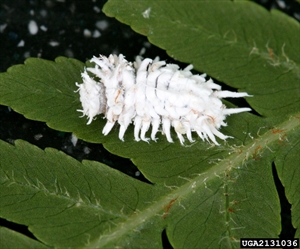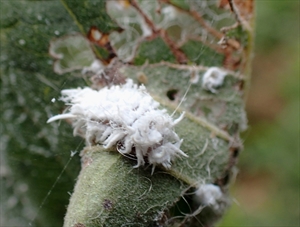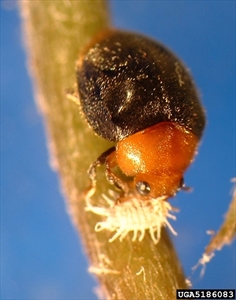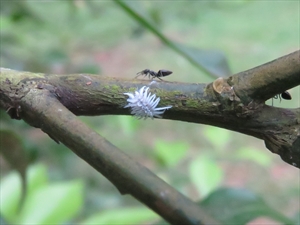- Worldwide distribution. The 'mealybug destroyer'. In Oceania, Australia (native), Cook Islands, Fiji, Guam, New Caledonia, New Zealand, Papua New Guinea. Available commercially. Preys on scales, mealybugs and aphids.
- Eggs laid near prey, larvae with yellowish grey bodies and waxy threads, orange-brown heads and black wing cases. Covered in fine white hairs.
- Important biocontrol beetle.
- Natural enemies: wasps, spiders, birds, and ants.
- Biosecurity: need to assess risk before introduction as it is a generalist.
- Cultural control: hot water to kill ants: 47°C (note, 49°C kills plants).
- Management: (i) move adults and larvae to colonies of pests; (ii) use sleeve cages to protect populations initially; (iii) avoid use of organophosphates, carbamates and synthetic pyrethroids; (iv) control ants: (a) stomach poisons (fipronil, Amdro®, borax), (b) growth regulators (methoprene, pyriproxyfen), (c) nerve poisons (bifenthrin, fipronil, imidacloprid). See (http://piat.org.nz/getting-rid-of-ants).







